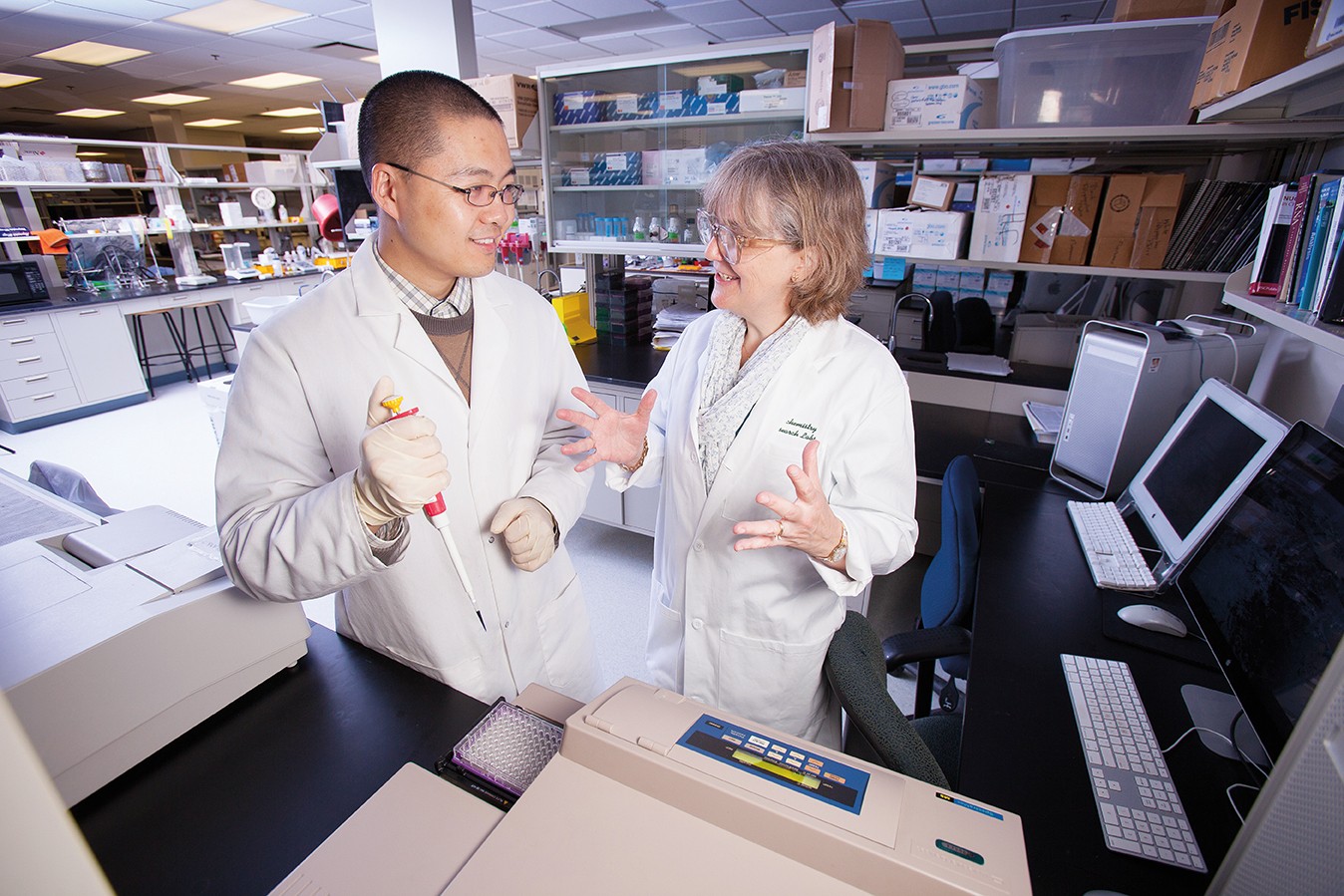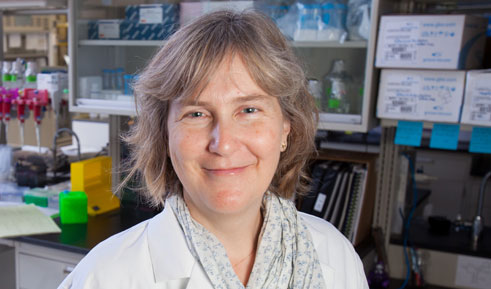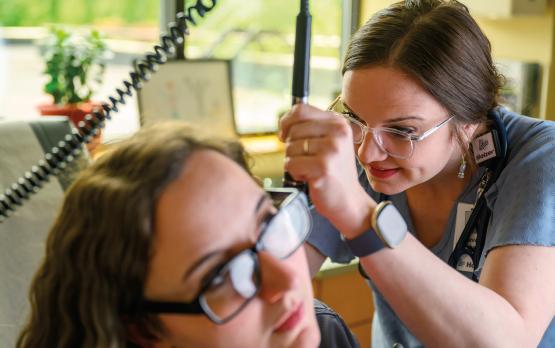
That’s what OHIO Professor of Chemistry and Biochemistry Jennifer Hines and her research team are proposing. Hines studies ribonucleic acid, RNA, the molecule in all living things that carries out the instructions for replicating genetic information in DNA. Scientists now believe RNA has a much greater role to play in drug discovery.
“We’re still at the dawn of an era, but so much is being discovered,” Hines says.
Bacterial resistance to antibiotic drugs has been a growing concern among scientists and health care professionals. Every time a drug doesn’t kill off all the infectious bacteria, the ones that survive reproduce and adapt. And because “bacteria are so readily adaptable” and reproduce so quickly, Hines says, they outpace the rate of the invention of new drugs.
RNA offers a potential solution through its role in gene transcription, an action that uses riboswitches, small molecules that control gene expression. Hines’ research is focused on the T box riboswitch, which she says is like a light switch in a darkened room, left off until someone needs a light.
“If we can find a drug that keeps that switch turned off when the bacteria’s trying to turn it on, we can kill [the bacteria],” Hines explains.
Fortunately, the T box riboswitch controls many different genes in lots of bacteria.
“You could imagine developing something that will kill all these different bacteria with an essential gene regulated by the T box,” she says. “That overlap could also make it harder for bacteria to become resistant.”

Chemistry and Biochemistry Professor Jennifer Hines (RIGHT) and her team are developing methods to combat drug-resistant bacteria by harnessing some of the human body’s most foundational built-in technology. Photo by Jonathan Adams, BSVC ’13
To create such a drug, Hines’ group must test how different molecules interact with the T box riboswitch. For this task, they use the Ohio Supercomputer Center’s high-powered processors that “go through many more calculations in a fraction of the time” it would take her single lab computer to complete just one, Hines says.
Hines and her team do this work online from their lab on the Athens Campus. Students access the center’s web interface on their laptops, which means more molecules are analyzed and “more students [are] involved in the computational work,” Hines says.
Even then, she says, it will take a long time to run the billions of calculations required to design, synthesize, and test the small molecules. Students continue to plug away at the project at Hines’ lab in the biochemistry building. While this and other groundbreaking research is occurring, OHIO is scheduled to open a new chemistry building by Clippinger Laboratories in summer 2020, where more state-of-the-art research and collaboration for faculty and students will transpire.
With such resources, the possibilities for drug discovery are far-reaching.
“The knowledge is just exploding,” she says.
Feature photograph: Professor Jennifer Hines utilizes OHIO’s Biochemistry Research Facility on West State Street to develop methods to combat drug-resistant bacteria. Photo by Jonathan Adams, BSVC ’13





